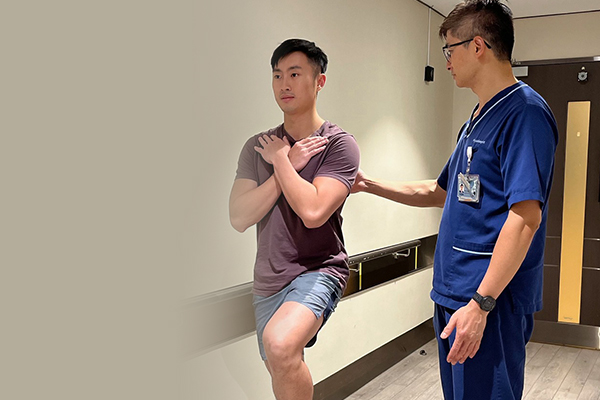What is Diabetes Mellitus?
Diabetes Mellitus (DM) is a condition in which an individual’s blood glucose level is abnormally elevated. It occurs when the body either cannot produce enough insulin, a hormone that regulates blood glucose, or cannot use the insulin it produces effectively.
There are 2 main types of diabetes:
Type 1 diabetes [1]: a lifelong condition which the body's immune system attacks and destroys the cells that produce insulin.
Type 2 diabetes [2]: In this case, the body does not produce enough insulin, or it does not react to the hormone properly.
Type 2 diabetes is far more common than type 1. It accounts for more than 90% of the cases.
Complication of DM
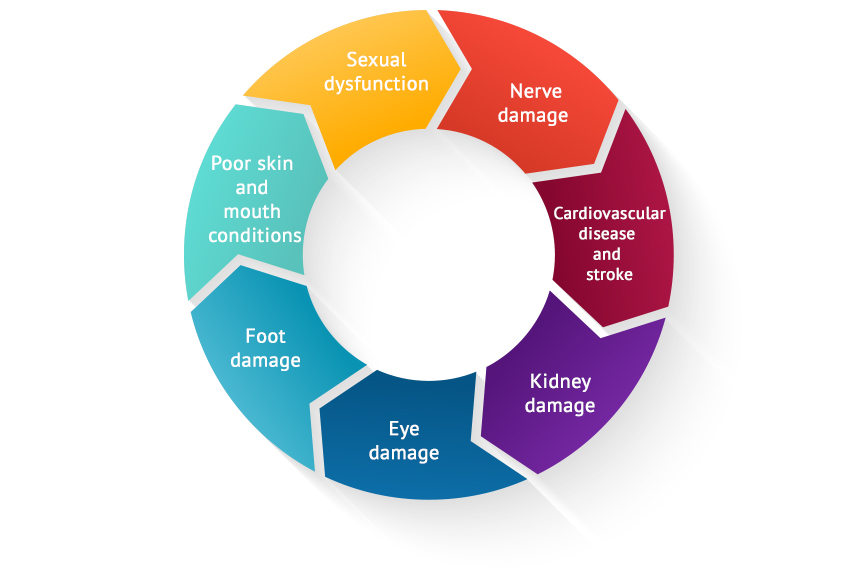
What causes DM?


Effect of exercise is promising...
Aerobic Exercise Recommendation
You are recommended for having at least 150 minutes/week of moderate-intensity activity (e.g. brisk walking or light cycling) to vigorous activity (e.g. jogging or hiking) to improve your body stores, glucose consumption, stamina and cardiac function.
Strength Training
It is important for people with diabetes to build up their muscles for better blood glucose control. It can also promote your functional capacity by making daily activities easier and safer.
Benefits of a Physiotherapy Program
Fall ManagementOur program also includes:
References
Diabetes Mellitus (DM) is a condition in which an individual’s blood glucose level is abnormally elevated. It occurs when the body either cannot produce enough insulin, a hormone that regulates blood glucose, or cannot use the insulin it produces effectively.
There are 2 main types of diabetes:
Type 1 diabetes [1]: a lifelong condition which the body's immune system attacks and destroys the cells that produce insulin.
Type 2 diabetes [2]: In this case, the body does not produce enough insulin, or it does not react to the hormone properly.
Type 2 diabetes is far more common than type 1. It accounts for more than 90% of the cases.
| Fasting glucose | ||||
| < 5.6 mmol/L | ≥ 5.6 to < 7 mmol/L | ≥ 7 mmol/L | ||
| 2 Hours after Meal | < 7.8 mmol/L | Normal | Impaired Fasting Glucose | Diabetes |
| ≥ 7.8 to < 11.1 mmol/L | Impaired Glucose Tolerance | Impaired Glucose Tolerance | Diabetes | |
| ≥ 11.1 mmol/L | Diabetes | Diabetes | Diabetes | |
Complication of DM

- Nerve damage occurs in diabetic patients, leading to poor conduction of the nerves that affect how they see, hear, feel and move. It also affects the balance ability of the patients and make them prone to fall, resulting in serious injuries.
- High blood sugar level for a long period can damage the blood vessels, this can lead to heart attacks and strokes.
- The tiny blood vessel clusters (glomeruli) that are responsible for filtering in the kidney can be damaged in diabetic patients.
- Blood vessels in the eye can be damaged. This could lead to blindness.
- Diabetic patients usually have foot complications, and these are caused by nerve damage and poor blood flow.
- Bacterial and fungal infections are more likely to occur in diabetic patients.
- Damage to the nerves and blood vessels can cause erectile dysfunction in men.
What causes DM?


Effect of exercise is promising...
- Even one session of workout can improve blood glucose and insulin sensitivity up to 24 hours or longer.
- To obtain long term effect, the American College of Sports Medicine (ACSM) recommends a gradual build up of exercise habit to do at least 150 to 300 minutes per week of moderate intensity, or 75 to 150 minutes per week of vigorous intensity of aerobic activity. It also recommends to do 2 to 3 days per week of moderate to high intensity of resistance training.
Aerobic Exercise Recommendation
You are recommended for having at least 150 minutes/week of moderate-intensity activity (e.g. brisk walking or light cycling) to vigorous activity (e.g. jogging or hiking) to improve your body stores, glucose consumption, stamina and cardiac function.
| What? Any rhythmic continuous activity 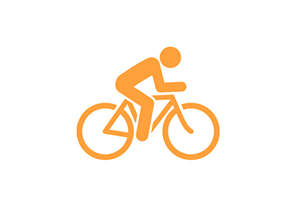 | How often? 3 - 7 days per week  | How hard? Fairly light to somewhat hard 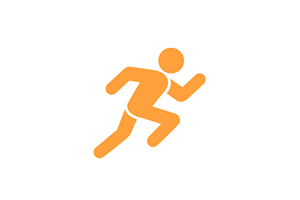 | How much? Start w/ a few minutes. Gradually build up to 30-60 minutes over the day.  |
Tips: Stay active as best as you can! You are recommended to start with 5 or 10 minutes workout, following by gradual progression to 20-30 minutes. If you want to lose weight, do twice as much activity. Cautions that you should take when having aerobic activity:
| |||
Strength Training
It is important for people with diabetes to build up their muscles for better blood glucose control. It can also promote your functional capacity by making daily activities easier and safer.
| What? Hand weights, resistance bands, weight machines or your own body (for example, kitchen counter push-ups or chair squats) 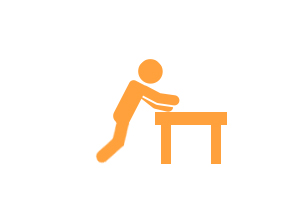 | How often? 2-3 Days/week *Rest day in between  | How hard? Start with light effort. Build up to medium or hard effort. 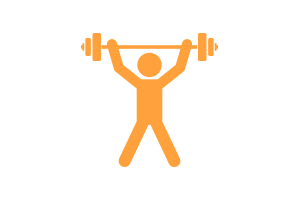 | How much? 10-15 repetitions to start (for each major muscle group) Build up to 8-10 reps of challenging effort.  |
Tips: To exercise correctly and safely, you are recommended to consult a certified exercise professional when necessary. Cautions that you should take when having strength training:
| |||
Benefits of a Physiotherapy Program
- We provide a thorough examination to understand the past medical history, strength and weakness of each individual
- We will do submaximal exercise test to gain knowledge of your physical status in order to tailor the most suitable and safest program for you
- We may also use Tanita® BIA monitor to understand the change of your body composition throughout the program
- Education is a crucial part of our program
- We educate our patient how to self-monitor blood pressure, target heart rate, glucose level and the use of RPE in order to train safely and effectively
Fall Management
- Fall risk assessment
- Walking aid prescription
- Balance exercise
- Proprioceptive training
- Foot sensation test and education
| Assessment •Bioelectrical Impedance Analysis •Submaximal Treadmill Test |
| Aerobic exercise •Jogging •Swimming |
| Resistance training •Free Weight •Machines |
| Home exercise •Tailor-made •Self monitored |
| Balance training •Fall risk assessment •Exercise |
| Education •Monitoring Blood Pressure During Exercise •Other Related Issues |
Day 1 | 1st Week | 1st Month | 3 Months | |
Assessment |
|
|
| |
Aerobic and Resistance Training |
|
|
|
|
Balance Training |
|
|
| |
Education |
References
- Hospital Authority: https://www21.ha.org.hk/smartpatient/spw/zh-hk/disease-information/disease/?guid=c73a0386-fe66-42eb-a979-7619ac8359da [3]
- Mayo Clinic: https://www.mayoclinic.org/diseases-conditions/diabetes/symptoms-causes/syc-20371444 [4]
- American College of Sports Medicine (ACSM): https://www.acsm.org/news-detail/2022/02/09/acsm-publishes-new-recommendations-on-type-2-diabetes-and-exercise [5]





